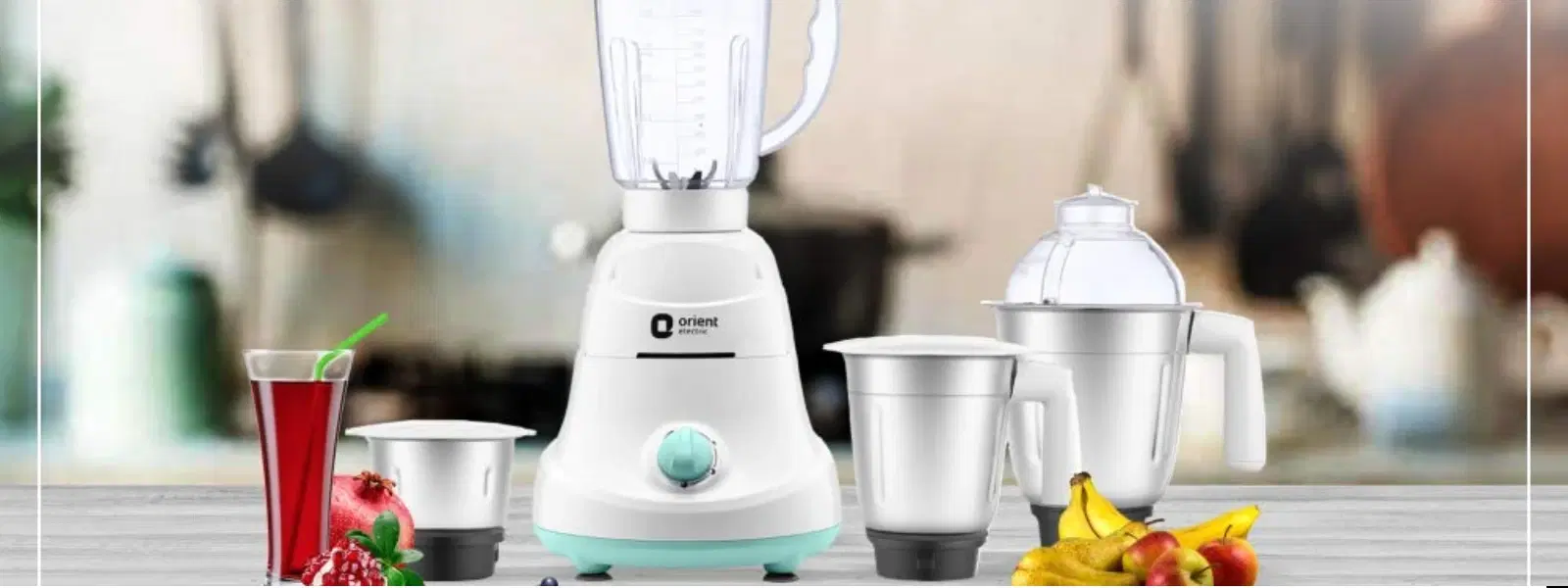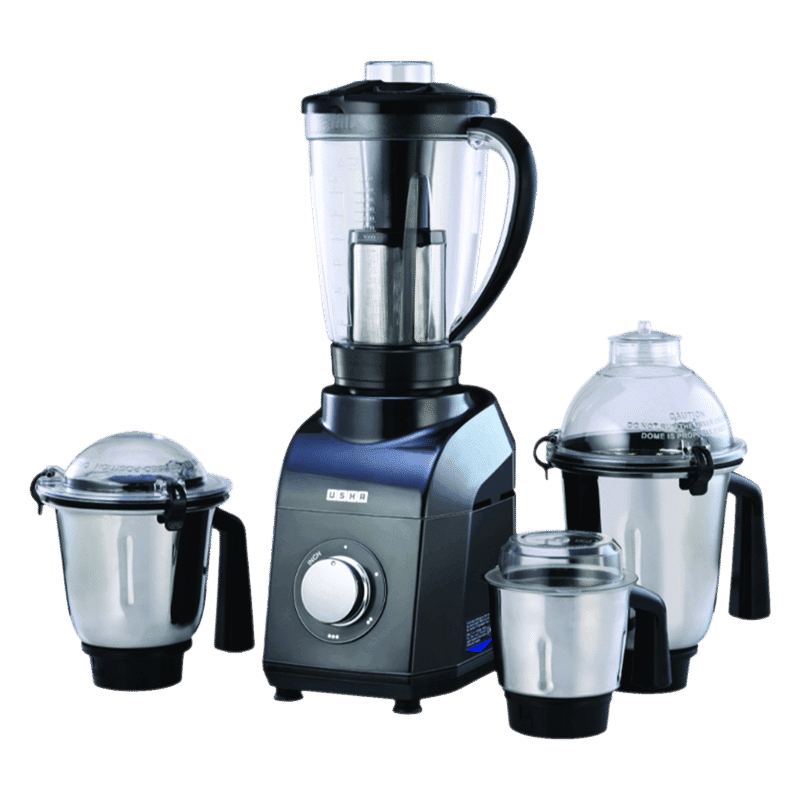
Home Appliances
•04 min read

Buy Philips 1000 Watt 4 Jars Juicer Mixer Grinder (22000 RPM, Rotary Knob Control, Black/White) online at best prices from Croma. Check product details, reviews & more. Shop now!
Imagine effortlessly whipping up creamy smoothies, fluffy cakes, or perfectly blended sauces with an electric mixer blender at your side. This multi-purpose appliance is a must-have in every modern kitchen, empowering you to transform everyday cooking into a delightful culinary experience. Learn how this efficient electric kitchen appliance can be your best ally for a stress-free, yet professional cooking journey.
An electric mixer blender is a versatile device that can handle a wide array of tasks, from blending soft fruits and vegetables to mixing dough or even whipping cream. Unlike traditional appliances, this tool offers flexibility by combining the functions of a blender for smoothies with that of a multi-purpose mixer for baking and food processing. Whether you prefer a handheld mixer for quick bursts of whipping or a full-fledged stand mixer for more rigorous tasks, each variant has a unique role in your kitchen.
One of the most common questions is whether an electric mixer is the same as a blender. While both are indispensable electric kitchen appliances, their functions do vary. Mixers, such as the best mixer for baking, are specifically designed to mix, whip, and knead ingredients for cakes, cookies, and bread. Blenders, on the other hand, are tailored for liquid-based tasks like preparing smoothies, soups, and sauces. Some models even offer hybrid options, combining the basics of both functionalities to cater to diverse culinary needs.
When deciding on the ideal appliance for your needs, you can choose from a variety of options. A handheld mixer is perfect for quick whipping or mixing tasks, while a stand mixer is ideal for heavy-duty baking and dough mixing. High-speed blenders are renowned for preparing smooth, lump-free smoothies and soups, whereas compact blenders are excellent for smaller kitchens and quick tasks. There are even food processor blenders equipped to deal with tough ingredients, delivering both power and precision.
Key features significantly impact the performance of your electric mixer blender. When evaluating your options, consider the number of speed settings available, as this flexibility helps achieve the perfect texture every time. Attachments such as whisks, dough hooks, and additional blades are essential for ensuring your multi-purpose mixer performs to its maximum potential, whether you are crafting a perfect cake batter or a rich, blended soup. Capacity is also critical; larger bowls or cups may be beneficial if you frequently cook for a family, while smaller, more compact models can perfectly serve individuals or couples.

Buy Philips Daily Collection 300 Watt 5 Speed Hand Mixer with 4 Attachments (Non-Slip Grip, Black) online at best prices from Croma. Check product details, reviews & more. Shop now!
Setting up your electric mixer blender correctly is the first step toward professional-looking results. Begin by assembling the appliance as per the instruction manual. Select the appropriate attachment or blade based on the task at hand; for example, choose a whisk for whipping cream or a standard blade for blending smoothies. Ensure that all pieces are securely fitted and that the appliance is placed on a stable surface. This careful preparation paves the way for smooth operation and optimal performance.
Once your appliance is set up, start on the low speed to blend ingredients gradually. Adding your ingredients slowly, especially for tasks like making dough or emulsifying sauces, can ensure consistency and avoid splashes. When preparing a smoothie in your high-speed blender, add liquid first, followed by fruits and other tougher ingredients; this method prevents catching and ensures a smoother texture. For baking, when using a stand mixer, begin with low speed to combine dry ingredients, and then gradually increase the speed once everything is evenly mixed. These practical steps will help you obtain a professional finish every time.
To enjoy long-lasting performance from your electric mixer blender, thorough cleaning and maintenance are essential. Always unplug the appliance before cleaning. Disassemble removable components such as the mixing bowl, blades, and attachments, and clean them with warm soapy water. For stubborn residues, allow the pieces to soak for a few minutes before scrubbing gently. Regular cleaning not only maintains hygiene but also extends the device's lifespan, ensuring it remains a reliable partner in all your culinary adventures.
Pro Tip from industry experts
Did you know? Using a high-speed blender for smoothies ensures smoother textures by breaking down tough fibres in fruits and vegetables. For baking, a stand mixer is ideal for achieving evenly mixed dough and batter. Remember, choosing the right tool can make all the difference in your culinary results.
Once you’ve mastered the basic operations, it’s time to explore creative recipes that push your mixer blender to its limits. Experiment with different types of smoothies by adding seasonal fruits, leafy greens, and a splash of your favourite juice to create personalised drinks. Try making velvety soups and sauces that can add a gourmet touch to everyday meals. For baking enthusiasts, challenge yourself by mixing intricate cake batters or even kneading bread dough with precision. Adjust the speed and blending times to achieve textures that perfectly suit each dish.

Buy USHA TurboX 1200 Watt 4 Jars Mixer Grinder (3 Speed Setting, Dark Grey) online at best prices from Croma. Check product details, reviews & more. Shop now!
Even the best appliances might face a few hiccups. If your mixer blender starts to overheat or shows signs of uneven mixing, check that the appliance isn’t overloaded and that you’re using the right speed settings. If you are dealing with particularly tough ingredients, consider pulsing briefly rather than running the device continuously. These troubleshooting tips can quickly resolve common issues, ensuring that your appliance performs optimally every time.
No, each appliance is designed for a specific purpose. Mixers are crafted for baking tasks like whisking and kneading, while blenders excel at liquid-based recipes such as smoothies and soups.
This depends on your cooking needs. If your primary focus is baking, a mixer suits your requirements better whereas for preparing drinks or processing foods, a blender is the preferred choice.
High-speed blenders are ideal for making drinks because they are capable of crushing ice and breaking down tough ingredients, ensuring smooth and consistent textures.
Although there are hybrid models available, a traditional mixer is generally better for dry and semi-liquid tasks, while a blender is specifically engineered for liquid-based recipes.
Successfully harnessing the power of an electric mixer blender is truly empowering. By understanding the differences between various types, choosing the correct tool for the job, and following systematic steps, anyone can elevate their culinary skills to a professional level. Consistent maintenance and attention to detail can further boost the performance and longevity of this indispensable kitchen gadget. For those eager to further enhance their cooking experience with technology that marries convenience with performance, exploring more about the latest in electric kitchen appliances could be a great next step.